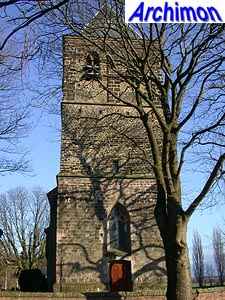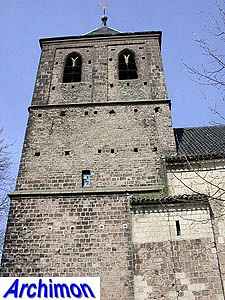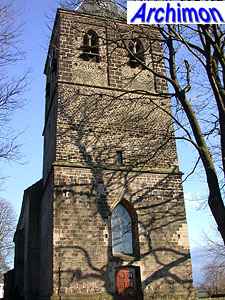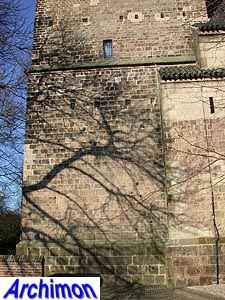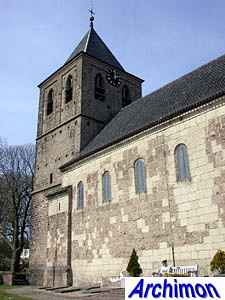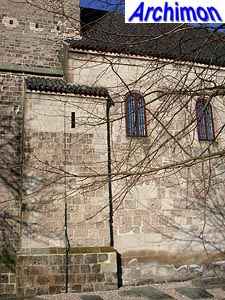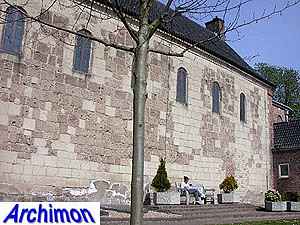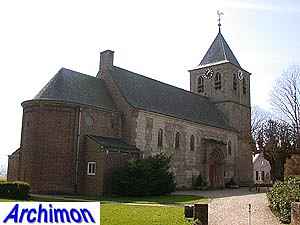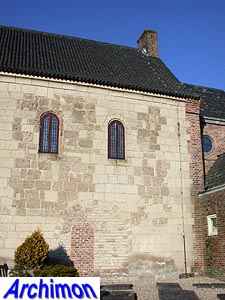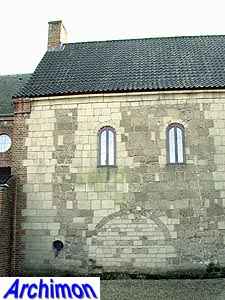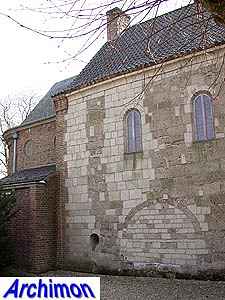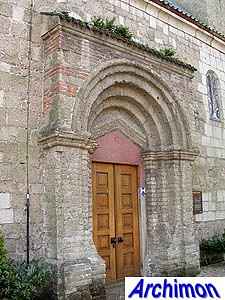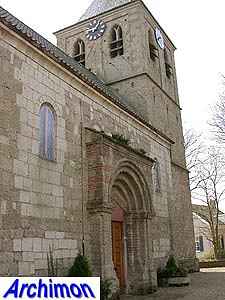
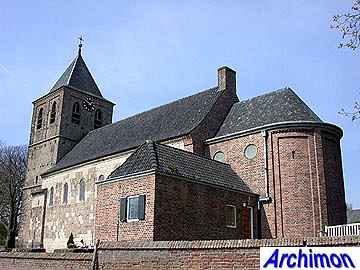 Although now located at the edge of
Oosterbeek, the old church when built was at the centre of the
village. Villages moving to another location are not rare, but
in this case it becomes very obvious as it takes quite a walk to
get here from the current centre.
Although now located at the edge of
Oosterbeek, the old church when built was at the centre of the
village. Villages moving to another location are not rare, but
in this case it becomes very obvious as it takes quite a walk to
get here from the current centre.
The church is one of the oldest in The Netherlands. The one-aisled
nave dates from the 10th century and is the oldest of the Veluwe region.
The original rectangular Carolingian choir with three internal
apses was replaced by a Romanesque one in the 12th century. In
the same period a porch in Romanesque style was added to the north
side of the nave while two lateral chapels were demolished, although
traces of these are still clearly visible in the walls of the
nave. The tower dates from ca. 1350 and is in a simple Gothic
style. At the south side, at the corner between tower and nave,
is a short stair-turret. In the 15th century the choir was once
again replaced, this time by a Gothic one. An extensive enlargement in 1856 gave the church a neo-Gothic look, complete with a transept
and large pointed windows.
In September 1944 the church was greatly damaged. It was one
of the last strongholds of the British 1st Airborne Division
before its retreat over the Rhine on the night of 25/26 September.
In and around the church there are several reminders to the role
of the church during the Battle of Arnhem.
After the war the church was restored to the state of ca. 1400,
following plans by W.J. Gerritsen and C.J. Cramer. The Romanesque
origins of the nave were emphasized by closing the large windows
and replacing them with smaller ones, while a new pseudo-Romanesque
choir replaced the severely damaged Gothic one. The new choir
followed the contours of the former Romanesque choir. The outlines
of the Gothic choir are still visible in the shape of the wall
just behind the church.
The church has been in protestant use ever since the Reformation
and is still used for services, as well as cultural manifestations.
